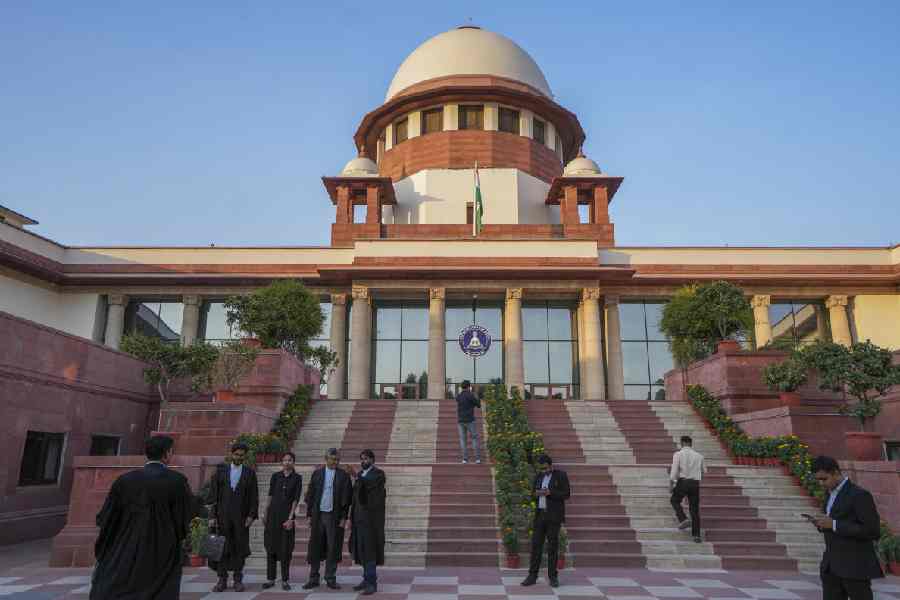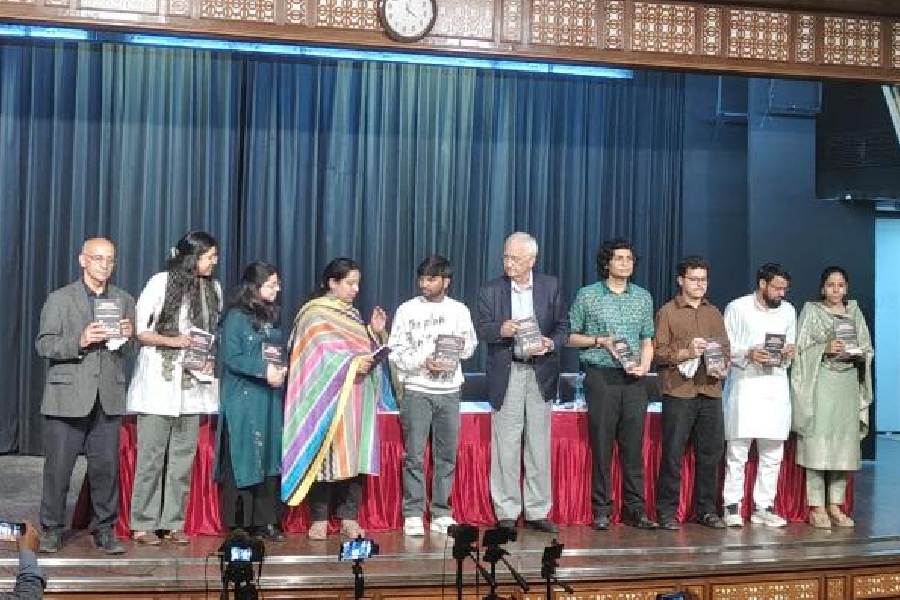 |
 |
| (Top) Outside the gate No. 1 of Khardah Jute Mill where production has stopped; the Fankighat kutcha line near Biswaspara. Picture by Sanat Kumar Sinha |
With its rows of crumbling shanties separated only by open drains, this could be any slum in the city.
Only this is the last redoubt of the 743 workers of Khardah Jute Mill, who have been resisting the efforts of the National Jute Manufacturers Corporation (NJMC) to ease them out once they bite the bait of the voluntary retirement scheme (VRS). The majority of their colleagues have already accepted VRS.
With their livelihood at stake, relations between the workers and the clerical staff, off and on, become severely strained.
R.C. Tiwari, chairman and managing director of NJMC, says on an average, each worker received Rs 2.5 lakh. The revival of two mills — Khardah and Kinission — has been planned. The machinery in these mills is not in working condition. So in the combined revival package, surplus assets such as land will be utilised to pay off loans.
But for now, the workers will languish here. Their future remains uncertain. Ghanshyam Behera, member of state committee of Aituc, says in 1980 the Centre had nationalised six jute mills, of which five — Khardah, Kinission in Titagarh, Alexandra in Jagaddal, Union North in Sealdah, the biggest National Jute Mill in Howrah — are in Bengal. The sixth is in Katihar, Bihar.
Till 1975, when the Khardah mill was still in private hands, it employed 6,000 workers. Till recently, 3,000 workers were left over. Of them, 2,100 have opted for VRS. NJMC collectively employed 30,000 workers. Post-VRS, it has 805 workers on its payroll, most of them in Khardah.
Here, production stopped on March 2004. The mill owed CESC Rs 1 crore as electricity bills and power connection was snapped. Both Titagarh and Khardah municipalities, have, partially retained water supply.
VRS payment began on April 17, when those opting for it had to hand over the keys to their mean dwelling houses. But for many workers — mainly from Bihar, Uttar Pradesh, Orissa and Andhra Pradesh — Khardah and Titagarh have for generations been home. They have nowhere to go.
Over the years, the diverse cultures of these workers have left their distinctive stamp on this huge colony stretching from Lakshmi ghat to the famous Shyam Sundar temple.
One of the most beautiful mosques — a little over a century old — on the outskirts of Calcutta is located here. It was built with donations from the workers.
Besides Hindu temples, there is an Oriya high school, a primary school which opened in 1935, a library, a Urdu school and an Andhra school as well. The women from the Orissa-Andhra border can be identified by their ikkat saris. But now it is time for them to leave.
About 25-30 per cent workers continue to live in tumbledown hutments next to which khatals look luxurious. They are forced to live in the porch (to stretch the meaning of this architectural term to breaking point) of these huts with all their earthly possessions, four to five heads per family.
Madrasi pucca line looks relatively clean as, besides the municipal workers, the residents themselves take the trouble to sweep the area. They use LPG here, and as a result, as one man put it: “Mosquito menace has increased. Coal and wood smoke acted as a deterrent.”
Residents of Fankighat kutcha line with 384 quarters next to genteel Biswaspara are worse off. It is mired in filth. It is a miracle that gastro-enteritis or worse has not broken out.
Suraj Deo Paswan, 57, who received Rs 170,000, and whose house has caved in, says: “I have a deaf-and-mute son and we have had nothing to do with our home in Bihar since the time of my grandfather.” So, his elder son does odd jobs. The jobless men sleep under the banyan trees.
Years ago, the quarters had been allotted in accordance with surnames, so “Pakistan” is clearly demarcated. The tallest structure is the dried up water tank. The wide Khardah canal flows by. On the other side is a chemical factory.











